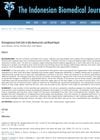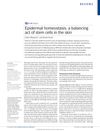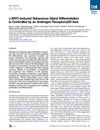Epidermal Stem Cells Are Defined by Global Histone Modifications Altered by Myc-Induced Differentiation
August 2007
in “
PLoS ONE
”
epidermal stem cells Myc activation sebocytes interfollicular epidermis chromatin modifications tri-methylated histone H3 lysine 9 H4 at lysine 20 hypoacetylation acetylation mono-methylation di-methylation chromatin silencing histone methyltransferases Set8 Ash-1 HDAC activity HDAC inhibitor trichostatin A TSA
TLDR Myc changes chromatin in stem cells, causing them to leave their niche.
The study explored how Myc activation influenced epidermal stem cells, leading them to differentiate into sebocytes and interfollicular epidermis, accompanied by significant changes in gene transcription. It was found that quiescent stem cells in the interfollicular epidermis and hair follicle bulge exhibited specific chromatin modifications, such as high levels of tri-methylated histone H3 at lysine 9 and H4 at lysine 20, and hypoacetylation at histone H4. Myc activation resulted in increased acetylation at histone H4 and a temporary rise in mono-methylation at lysine 20, which was later replaced by di-methylation associated with chromatin silencing. These changes were linked to histone methyltransferases Set8 and Ash-1. The transition from mono- to di-methylated H4K20 required HDAC activity and was inhibited by the HDAC inhibitor trichostatin A (TSA), which also induced a similar epidermal phenotype to Myc activation. The study concluded that Myc-induced chromatin modifications were crucial for the exit of stem cells from their niche.


